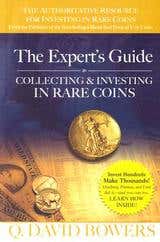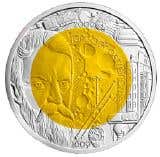Retailers Selling Precious Metals
On Oct. 2 it was reported that the Great Britain-based stores of major retailer Costco Wholesale have started selling physical gold and silver bars to their customers. Should this company,…
On Oct. 2 it was reported that the Great Britain-based stores of major retailer Costco Wholesale have started selling physical gold and silver bars to their customers.
Should this company, or any other large retail chain, begin offering such products in their American stores, what would be the likely impact on the supply and demand and, therefore, prices of physical gold and silver?
In Europe, many banks sell and deliver physical precious metals to their walk-in customers. That makes access to physical gold and silver much easier for the general public. As a consequence, gold and silver ownership in Europe is much more popular than in the U.S., where no banks offer such products to walk-in customers.
In China and India, there are already a large number of retailers selling physical precious metals, with the result that they are the world’s top two nations for gold and silver demand.
With lack of easy access to purchasing physical precious metals, and the residual effect of the ban on private gold ownership from 1933 to the end of 1974, only a tiny fraction of Americans own bullion-priced physical precious metals as an investment. Most estimates are that about 1 percent of U.S. residents do so. About the highest estimate I have seen is 3 percent of the population.
If one or more major U.S. retailers were to begin selling physical precious metals, I would expect that this tiny percentage of Americans who now own such items would increase. This would inevitably result in a small increase in global demand. With supplies unchanged, that would tend to put pressure on prices to rise.
But, I have to warn you that it is unlikely that major retailers could sell physical precious metals at the competitive prices compared to those already offered by coin and precious metals dealers.
For instance, the British press reported Costco is selling gold bars for six to seven percent above intrinsic metal value. When I do regular surveys of prices charged by major American bullion sellers, almost all are now selling one-ounce gold bars at a 4 percent premium over metal value—or less.
Costco in Britain is charging up to 28 percent above silver value for those bars. In contrast, you can purchase even small quantities of 1-ounce silver bars from major American bullion retailers at premiums about half what Costco charges in Great Britain. There are some bullion-priced silver coins where Americans can pay only a 5-7 percent premium over metal value.
The physical precious metals market is already highly competitive with thin profit margins. While major U.S. retailers may have a size advantage, the costs of their bureaucracy may prevent them from being low-price sellers of physical precious metals. As a result, I don’t think most coin and precious metals dealers have much to fear if major U.S. retailers begin selling precious metals to their customers.
I do need to add a point of clarification to the use of terminology in the British news stories. Instead of referring to prices as a premium or percentage above metal value, these stories instead used “markup.” In the U.S., the term markup refers to the increase of a retail selling price above a seller’s cost. As most who follow precious metals markets understand, precious metals retailers have a replacement cost on the wholesale market that is almost always higher than the spot price of the underlying metal. Thus, the actual markup above cost for American retailers is far smaller than the premium that buyers pay.
Patrick A. Heller was honored as a 2019 FUN Numismatic Ambassador. He is also the recipient of the American Numismatic Association 2018 Glenn Smedley Memorial Service Award, 2017 Exemplary Service Award 2012 Harry Forman National Dealer of the Year Award, and 2008 Presidential Award winner. Over the years, he has also been honored by the Numismatic Literary Guild (including twice in 2019), Professional Numismatists Guild, Industry Council for Tangible Assets, and the Michigan State Numismatic Society. He is the communications officer of Liberty Coin Service in Lansing, Michigan and writes Liberty’s Outlook, a monthly newsletter on rare coins and precious metals subjects. Past newsletter issues can be viewed at http://www.libertycoinservice.com. Some of his radio commentaries titled “Things You ‘Know’ That Just Aren’t So, And Important News You Need To Know” can be heard at 8:45 AM Wednesday and Friday mornings on 1320-AM WILS in Lansing (which streams live and becomes part of the audio and text archives posted at http://www.1320wils.com).






